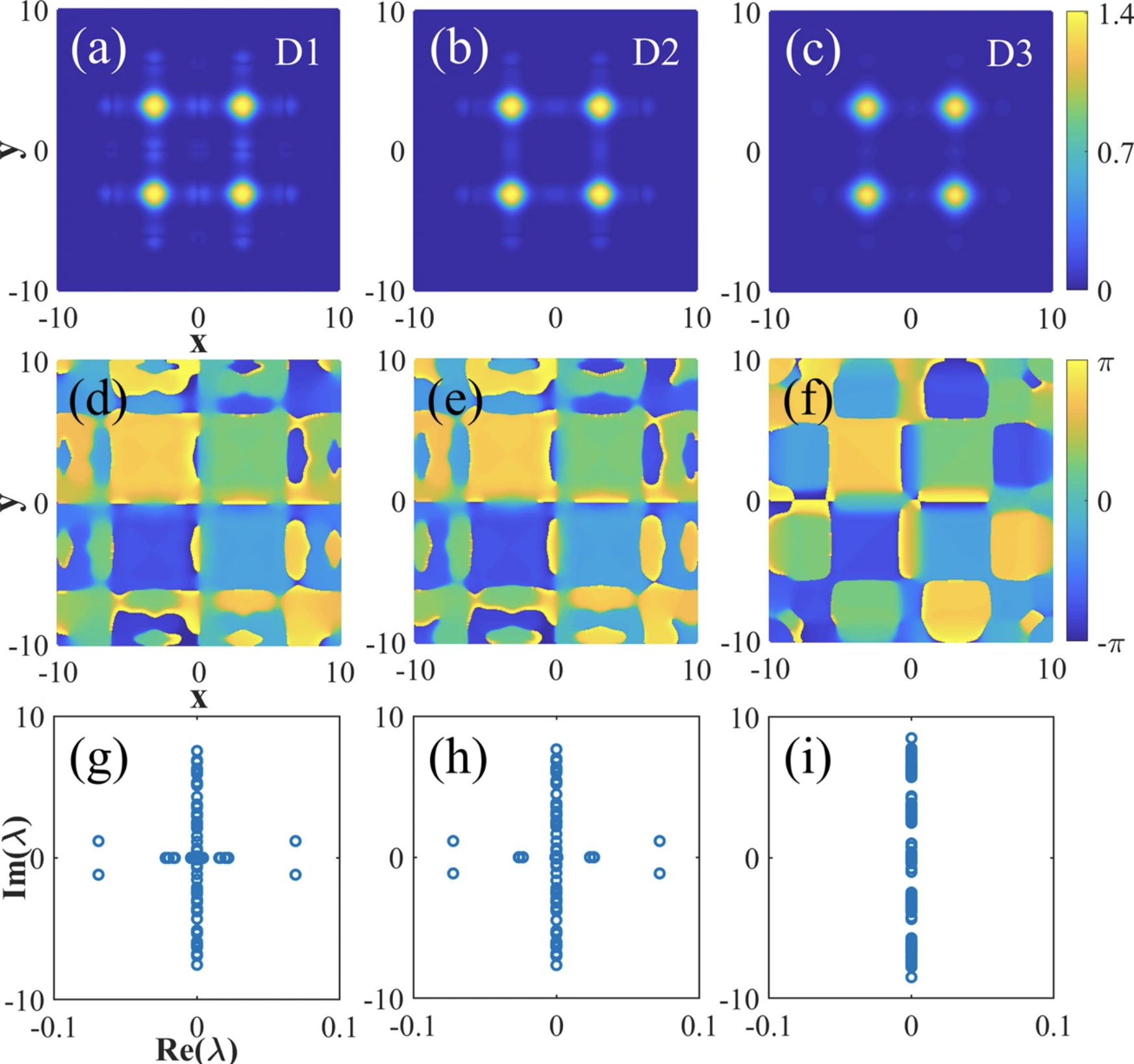The stabilization of multidimensional localized states usually relies on linear periodic media with uniform nonlinearity. Although nonlinear lattices with smooth variation of nonlinearity may support various species of solitons. However, existence and stability property of solitons in with cubic–quintic nonlinearities and 2D linear periodic potential are yet to be revealed. Are there some model or method to prevent critical collapse of higher-order solitons?
A research team led by Prof. Dr. ZENG Jianhua from Xi'an Institute of Optics and Precision Mechanics (XIOPM) of the Chinese Academy of Sciences (CAS) proposes a feasible scheme to stabilize 2D localized modes against critical collapse by considering the fractional diffraction order to light propagation in periodic physical systems with competing self-focusing and self-defocusing nonlinearities in cubic–quantic nonlinear terms. The result was published in COMMUNICATIONS PHYSICS. (https://www.nature.com/articles/s42005-020-0291-9).

Contour plots, phases, and eigenvalues of vortex gap solitons appearing as quadruple-mode bound states. (Image by XIOPM)
They propose theoretically a framework of 2D nonlinear fractional Schr?dinger equation (NLFSE), which can suppress the critical collapse. They reveal that the model produces a variety of stable soliton families, including 2D fundamental gap and vertical solitons as well as gap soliton clusters (solitons are always unstable in the quintic-only model).
A detailed insight into the dynamic properties of solitons further shows that the solitons are robustly stable in the middle of the band gaps of the underlying linear Bloch spectrum, while unstable near the edges of the band gaps; and the stability of the solitons is moderately influenced by nonlinear strength.
The notable discovery offers a new avenue to investigate the existence and dynamic properties of 2D localized modes by managing the diffraction order and tunable band gaps of the periodic physical systems.
Download: